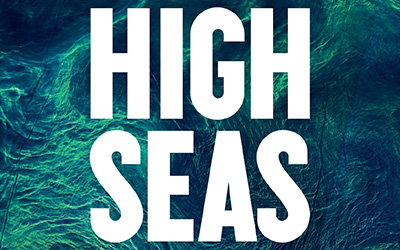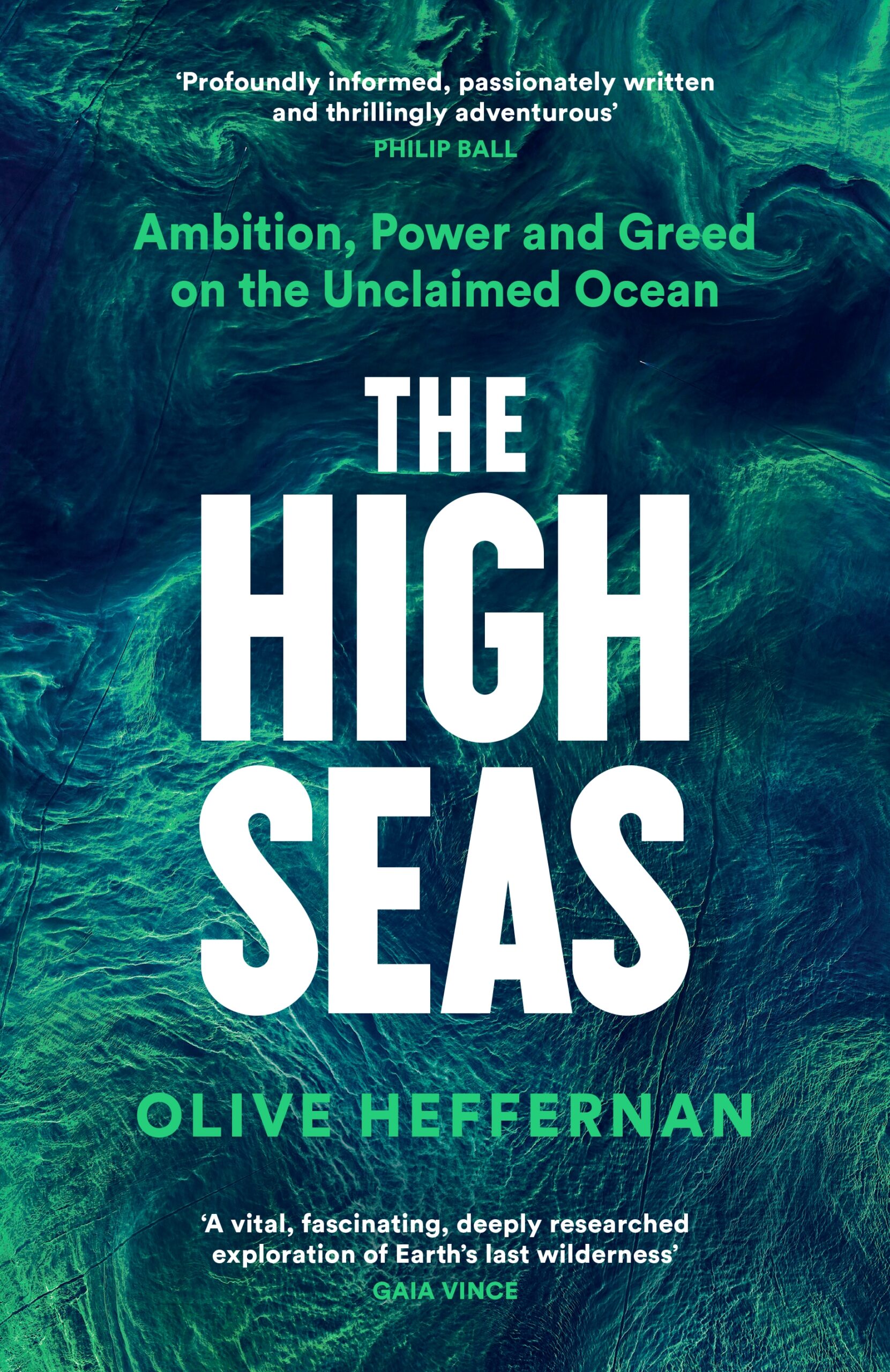
- Free Article: No
- Contents Category: Oceans
- Review Article: Yes
- Article Title: Dumping ground
- Article Subtitle: Open ocean, outer sea
- Online Only: No
- Custom Highlight Text:
Every December, great white sharks leave the bountiful coasts of California to congregate at a small patch of the Pacific Ocean located approximately midway between Hawaii and Mexico. As the sharks have been diving there, they have been teaching scientists that the area now known as the White Shark Café is much livelier, and more nourishing, than previously thought. Meanwhile, a supposedly humdrum stretch of the deep North Atlantic seabed called the Porcupine Abyssal Plain has been revealed as adorned with rolling hills, some of them hundreds of metres in height, where seabed organisms thrive. Ten thousand kilometres south and east of the Plain, the Indian Ocean’s Saya de Malha Bank supports the largest seagrass meadow in the world, spectacular corals and coralline algae, and, in surrounding depths, pygmy whales, flying fish, and untold others. ‘Some of the most extraordinary, most biodiverse parts of our planet are on the high seas’, writes the science journalist Olive Heffernan. ‘Yet they are unknown to most.’
- Featured Image (400px * 250px):

- Alt Tag (Featured Image): Killian Quigley reviews ‘The High Seas: Ambition, power and greed on the unclaimed ocean’ by Olive Heffernan
- Book 1 Title: The High Seas
- Book 1 Subtitle: Ambition, power and greed on the unclaimed ocean
- Book 1 Biblio: Profile Books, $45 hb, 344 pp
- Book 1 Cover Small (400 x 600):

- Book 1 Cover (800 x 1200):

- Book 1 Readings Link: https://www.readings.com.au/product/9781788163576/the-high-seas--olive-heffernan--2024--9781788163576#rac:jokjjzr6ly9m
Heffernan’s new book reports on ‘that unclaimed part of our planet, which – if we’re talking about volume of living space – is 95 per cent of Earth’. This colossal realm has gone by numerous names, among them ‘outer sea’, ‘open ocean’, ‘marine areas beyond national jurisdiction’, ‘international waters’, and, of course, ‘high seas’. It is a space defined, in international law, as comprised of all seas not subject to the sovereignty of a state – as ‘the ocean which … can be neither seized nor inclosed’, in the words of the seventeenth-century Dutch jurist Hugo Grotius. For Heffernan, it is ‘a vast global commons’, the ‘resources’ whereof we have been, and remain, ‘free to pillage or protect’. The High Seas is a summons to confront the pillaging – rampant and devastating – and to join in protecting this watery ‘half of our planet’. It is also an extended exercise in deep chorography, in bringing places like the White Shark Café, the Porcupine Abyssal Plain, and the Saya de Malha Bank to mind, in order that they might be brought within the compass of our care.
For more than twenty years, Heffernan has been studying – and sometimes sailing – the open ocean. On a trip to Norway, she visits a research centre conducting experiments in fishing the sea’s mesopelagic regions (or middle depths). These oceanic ‘twilight zones’, which flow between 200 and 1,000 metres underwater, are home to ‘the largest supply of untapped fish on Earth’. This ‘supply’, newly threatened with depletion, has been playing an indispensable role in the ocean’s vaunted capacity for storing carbon. In Panama City, Heffernan acquaints herself with technologies for identifying and tracking ‘pirate fishers’ who despoil the outer sea in defiance of international agreements, and who frequently engage in exploitative labour arrangements, including wholesale slavery. From the deck of the Spanish Sarmiento de Gamboa, in the Gulf of Malaga, she observes the trial of the Apollo II, a prototype ‘nodule harvester’ for use in deep-sea mining. At the Fram Strait, off north-east Greenland, she meets scientists devoted to ascertaining the changes occurring in Arctic waters and to understanding what they betoken for the rest of the planet. And so forth: The High Seas is essentially an anthology of Heffernan’s intrepid, meticulously researched voyages in search of the unclaimed ocean and all its rich – and strangely shifting – meanings.
In the twenty-first century, humanity’s high-seas impact has been rapidly worsening. Deep habitats have been devastated by trawl-fishing, a practice that has also proven perversely unproductive, nutritionally or economically. There is so much plastic waste in the open ocean that scientists have coined a neologism – the ‘neopelagic’ – to describe emerging trashy ecologies. Unscrupulous actors of all kinds – from cruise ships operators to the ‘space debris’ industry – treat international waters as a ‘dumping ground’ (5,000 kilometres east of New Zealand sits ‘Point Nemo’, the most remote spot in all the ocean and ‘the world’s largest spacecraft cemetery’). For Heffernan, these horrors are not evidence that we moderns have abandoned our ancestors’ pristine environmental virtue; what they signify is that humanity’s ever-present ‘need for extraction’ now touches realms that were beyond reach until very recently. Heffernan’s central concern is not whether but how we are to channel our newfound powers of exploiting the outer sea and all it contains.
The High Seas addresses this fundamentally ethical problem by asking how we might ensure both that ‘our decisions [are] informed by science’ and that ‘our global commons [is used] in ways that benefit the majority’. This tack leaves Heffernan totally sceptical of deep-sea mining but comparatively positive regarding marine ‘biodiscovery’, especially as it pertains to ‘ocean genomics’, a scientific and, yes, commercial project of comprehending the ‘genetic material held in all marine life forms’. Heffernan adopts a stirringly, and somewhat disconcertingly, utopian position on the potential for ocean genomics to ‘genuinely enrich humanity, by allowing us to develop a harmless ocean-based industry, all while providing us with the formulas for drugs to treat even the most deadly diseases’. It strains credulity to imagine that for-profit companies will hew faithfully to recent agreements to treat the ocean genome as ‘common heritage’. Still, Heffernan’s cornucopian pragmatism, rooted in decades of investigative writing, is helpful for clarifying the differences between an outlook like hers and those of a large and growing coterie of oceanic doomsayers. This is true of her take on biodiscovery, and it applies no less to her measured but receptive attitude towards evidence-backed strategies for ‘climate intervention’ in international waters. ‘Anyone who has cared to listen,’ she writes, ‘has been racked by the realisation that we can’t afford to dismiss using tech to fix the climate.’
Heffernan is adamant, in any case, that the fate of the high seas depends above all on new and effective policies for protecting them. This is not to imply that the open ocean has, until now, been a true free-for-all: ‘it is highly regulated,’ she explains, but by ‘a mish-mash of organisations and bodies’, many of them ‘hopelessly conflicted’. Some tentative optimism issues from the UN’s so-called ‘BBNJ Agreement’, adopted on 19 June 2023, and intended to hasten the creation of marine protected areas and to point the way to the conservation of thirty per cent of the ocean by 2030. The book’s copious histories of regulatory foibles are bound to temper our faith in the BBNJ Agreement’s prospects. Real hope may spring, nonetheless, from Heffernan’s warm account of the indefatigable experts and activists who started this battle for the outer sea’s biodiversity some twenty-five years ago. They persevered, and this has made a difference.


Comments powered by CComment